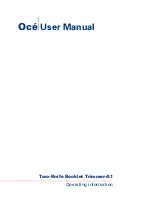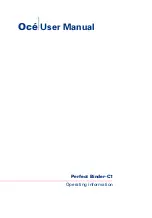
2
2
2-9
2-9
Functions > Basic Function > Authentication at TX
Functions > Basic Function > Authentication at TX
<Authentication protocol>
Examples of transmission protocol using SMTP AUTH are given below.
The EHLO response from the client tells whether SMTP AUTH is supported by the server and
the authentication algorithm being used at that time is described. In the event that there are
multiple authentication algorithms, multiple algorithm names are described. The client selects
one of the relayed authentication algorithms and then relays it on to the server. Server
challenge data come from the server and coded data made up from the server challenge
data, user name and password are returned in response for authentication. In general,
the authentication algorithm to be used can be selected on the server side and PLAIN and
LOGIN authentication and others which are undesirable from the perspective of security can
be blocked by the server setting. (Security policy is determined by the server.)
Server:220 smtp.example.com ESMTP server ready
Client(iR):EHLO ifax.example.com
S: 250-smtp.example.com
S: 250-DSN
S: 250-EXPN
S: 250 AUTH CRAM-MD5 DIGEST-MD5 : <- server declares authentication algorithm
C: AUTH CRAM-MD5 : <- client selects CRAM-MD5
S: 334 : <- server response (subsequently, authentication begins with CRAM-MD5.)
S: PENCeUxFREJoU0NnbmhNWitOMjNGNndAZWx3b29kLmlubm9zb2Z0LmNvbT4=
C: ZnJlZCA5ZTk1YWVlMDljNDBhZjJiODRhMGMyYjNiYmFlNzg2ZQ==
S: 235 Authentication successful.
<Authorisation algorithm selection>
Where the SMTP has multiple authentication mechanisms, selection is made in the order of
the priority list given below.
1) CRAM-MD5
2) NTLM
3) GSSAPI
4) STARTTLS operation PLAIN
5) STARTTLS operation LOGIN
6) STARTTLS non-operation LOGIN
7) STARTTLS non-operation PLAIN
Authentication methods can be disabled in service mode. When the service mode value is
set to '1', the encoding system can be disabled. (The default setting is all enabled.)
Ordinarily, the default setting is used, but if the server administrator wants to disable a
particular encoding system, the settings need to be changed by the service mode settings.
<SMTP AUTH related user modes>
For the actual SMTP AUTH settings, system administrator settings > network settings >
E-Mail/ I-Fax > Authent./ Encryption > SMTP Authentication (SMTP AUTH) should be set ON
and the required user names and passwords for SMTP AUTH need to be entered. If SSL
permission, which is the encoded transmission setting, described later, is ON, with PLAIN and
LOGIN authentication, the authentication encoded by the STARTTLS command can be used.
<Outlook Express example>
For reference, this section describes what happens to the Outlook Express settings when
using an SMTP server that supports SMTP AUTH. Outlook Express PLAIN authentication
only.
1) From the Outlook Express tools menu, select Accounts. In the example, pop3.canon.com
is selected.
2) From Internet Accounts, select the desired account and click on Properties. In the
example, the pop3.canon.com server tab has been selected from the Properties window.
3) Put a check in the 'My server requires authentication' box against the OutGoing mail
server.
4) Press the settings button that has been made active.
















































